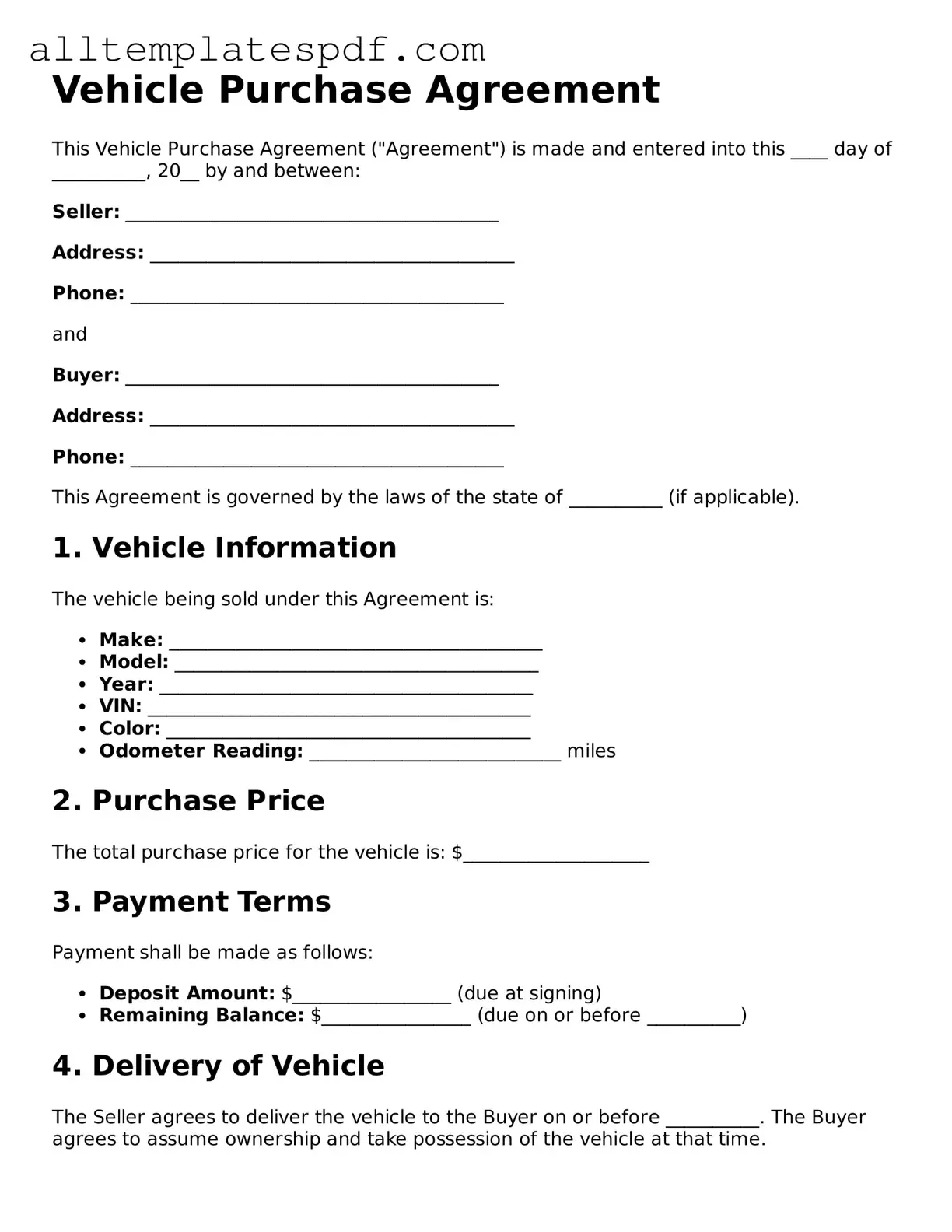Filling out a Vehicle Purchase Agreement can be straightforward, but many people make common mistakes that can lead to problems down the line. One frequent error is not reading the entire document before signing. It’s essential to understand all terms and conditions. Skipping this step can result in agreeing to unfavorable terms.
Another common mistake is failing to verify the vehicle identification number (VIN). The VIN is crucial for identifying the vehicle. If the number on the agreement does not match the vehicle, it can create issues with ownership and registration.
People often overlook the importance of including the correct purchase price. If the price listed is incorrect, it can lead to disputes later. It’s vital to double-check that the amount reflects what was agreed upon during negotiations.
Additionally, many buyers forget to check for any additional fees. These can include taxes, registration fees, and dealer fees. Not accounting for these can result in unexpected costs when finalizing the purchase.
Another mistake is not specifying the payment method. Whether paying in cash, financing, or leasing, the agreement should clearly outline how the payment will be made. Leaving this out can lead to confusion and complications.
Many individuals also neglect to include any warranties or guarantees. It’s important to document any promises made by the seller regarding the vehicle's condition or future repairs. This protects the buyer if issues arise after the purchase.
Buyers sometimes forget to include their personal information correctly. This includes the name, address, and contact details of both the buyer and seller. Incorrect information can cause problems with registration and ownership transfer.
Another mistake is not checking for any liens on the vehicle. A lien indicates that someone else has a financial interest in the vehicle. Buyers should ensure that the vehicle is free of liens before completing the purchase.
Lastly, many people rush through the signing process. It’s crucial to take the time to ensure that all details are accurate and complete. Rushing can lead to overlooking important information that may affect the purchase.
